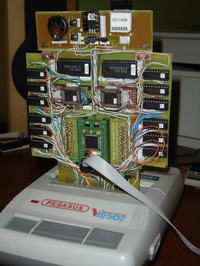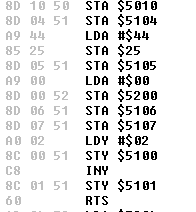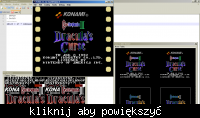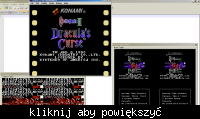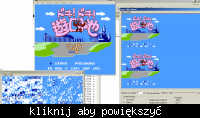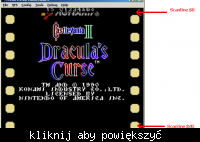Might as well have this too. 
Blargg did some RE work on it
Here's the wiki page for it
Disch's mapper docs are valuable too
So unless there's been some kind of breakthrough that hasn't been posted or documented anywhere, I'm going to assume that, since these sources all say they don't know how the IRQ counter specifically detects scanlines, I'm going to assume nobody knows how it works.
The current theory is that the MMC5 monitors the PPU address lines to detect scanlines. The MMC5 already has to monitor the address lines so that it knows when to inject its own extended tile/attribute data into the PPU.
The current theory is that the MMC5 watches for the two dummy nametable reads that occur at the end of each scanline. The easiest way I can think of to get this to work is to just check to see if the PPU fetches the same address twice in a row.
In theory, the PPU will never fetch from an address twice in a row. (This is unless the garbage nametable fetches during sprite fetches can be the same, but if the sprite fetches use the same circuit as the bg fetch, wouldn't it be a garbage nametable fetch, and then a garbage attribute fetch? That would always be two different addresses) The only time it does fetch from the same address twice is during those two dummy fetches at the end of the scanline.
However, there's also another potential way to get this to work:
Conveniently, A13 toggles for each tile, because the PPU fetches nametable/attribute data, and then pattern table data. A13 is high during the nametable fetch and the attribute fetch, and it's low during the pattern table fetches.
Since the MMC5 is likely already monitoring A13 to detect tiles, maybe it's also counting how many times A13 rises per scanline? A13 will rise exactly 43 times each scanline: 32 times for the BG tiles, 8 times for the sprites, 2 times for the two tiles of the next scanline, and then once for the two dummy nametable reads at the end of the scanline.
This probably isn't how it's done though, because the MMC5 seems to know exactly when a scanline starts, such that it can set the in-frame flag on the next scanline, when the PPU rendering is activated mid-scanline that is.
Blargg did some RE work on it
Here's the wiki page for it
Disch's mapper docs are valuable too
So unless there's been some kind of breakthrough that hasn't been posted or documented anywhere, I'm going to assume that, since these sources all say they don't know how the IRQ counter specifically detects scanlines, I'm going to assume nobody knows how it works.
The current theory is that the MMC5 monitors the PPU address lines to detect scanlines. The MMC5 already has to monitor the address lines so that it knows when to inject its own extended tile/attribute data into the PPU.
The current theory is that the MMC5 watches for the two dummy nametable reads that occur at the end of each scanline. The easiest way I can think of to get this to work is to just check to see if the PPU fetches the same address twice in a row.
In theory, the PPU will never fetch from an address twice in a row. (This is unless the garbage nametable fetches during sprite fetches can be the same, but if the sprite fetches use the same circuit as the bg fetch, wouldn't it be a garbage nametable fetch, and then a garbage attribute fetch? That would always be two different addresses) The only time it does fetch from the same address twice is during those two dummy fetches at the end of the scanline.
However, there's also another potential way to get this to work:
Conveniently, A13 toggles for each tile, because the PPU fetches nametable/attribute data, and then pattern table data. A13 is high during the nametable fetch and the attribute fetch, and it's low during the pattern table fetches.
Since the MMC5 is likely already monitoring A13 to detect tiles, maybe it's also counting how many times A13 rises per scanline? A13 will rise exactly 43 times each scanline: 32 times for the BG tiles, 8 times for the sprites, 2 times for the two tiles of the next scanline, and then once for the two dummy nametable reads at the end of the scanline.
This probably isn't how it's done though, because the MMC5 seems to know exactly when a scanline starts, such that it can set the in-frame flag on the next scanline, when the PPU rendering is activated mid-scanline that is.
